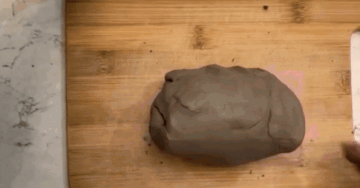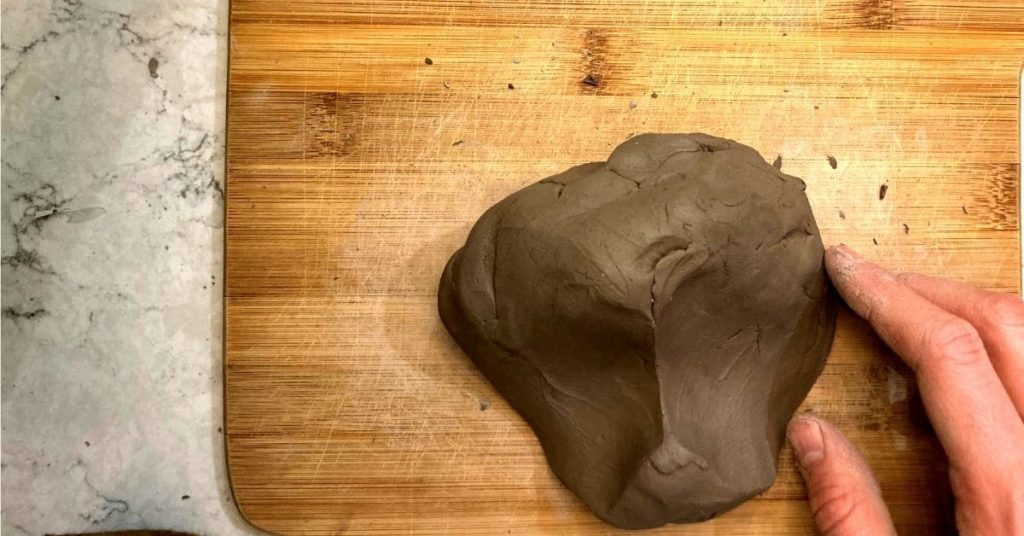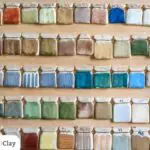Wedging pottery is the process of preparing clay to be used in a project by making it malleable, distributing moisture evenly, and removing air bubbles.
In this article, we’ll cover one of the four techniques of wedging called ox-head wedging.
What is ox-head wedging clay?
Ox-head wedging is a process where you press with the palms of your hands and rotate the clay repeatedly. It’s called the ox-head method (or sometimes “ram’s head”) because of the form the clay takes.
What you’ll need to get started
- block of clay
- cutoff tool
- large canvas board (optional)
How to wedge clay with the ox-head technique
How much clay should I work with?
To start, you’ll need clay. You’ll want to be able to cover the surface area of the clay with your hands to use the ox-head method, so the clay’s size should be small enough to grip.
The clay should either be in a cylinder or block shape. You can carve a block of clay from your stored clay using a cutoff tool.
Ox-head wedging technique
I like to use a clean and large canvas board to prevent the clay from sticking to the surface or anything (debris, crumbs, etc) sticking to the clay.
Put your clump of clay in the middle of your surface area. Put your hands on either side of the clay.
Your palms should be across the clay from each other on either side. Your fingers should cup around the edge furthers away from you. Your fingers keep the clay in a ball-like form which prevents the clay from flaring out to the sides.
Press your palms down and away from your body into the clay.
After completing this motion the clay should be narrowest in the middle and fattest at the top. This is where the “ox-head” shape comes into play.
Rotate the clay toward you, so that the fattest part of the clay is on top, and repeat the motion.
- Palms on either side of the clay
- Fingers cupping the edge furthest from you
- Pressing down and away from your body

You’ll want to do this 50 or more times. The amount of wedging you do is dependent on how recent the clay has been used. If it’s recently recycled, you’ll need to do more wedging.
As you start wrapping up the wedging, use less and less pressure as you press down. The clay will start taking the shape of a cylinder.
Lastly, pick up your clay cylinder and slap the sides forming the parts that are uneven or wrinkled.
Inspecting the clay
After I’ve wedged clay, I like to check to see if all the air bubbles and lumpiness are gone. The best way to do this is to cut the clay in half and inspect the inside.
The clay should be smooth and free of pocks or holes.
Conclusion
Ox-head wedging is one of 4 common ways to wedge pottery. If you want to see alternative methods, I recommend our piece on wedging clay.
Let us know if you have questions by emailing hello@wheelandclay.com. We’d love to hear from you!







